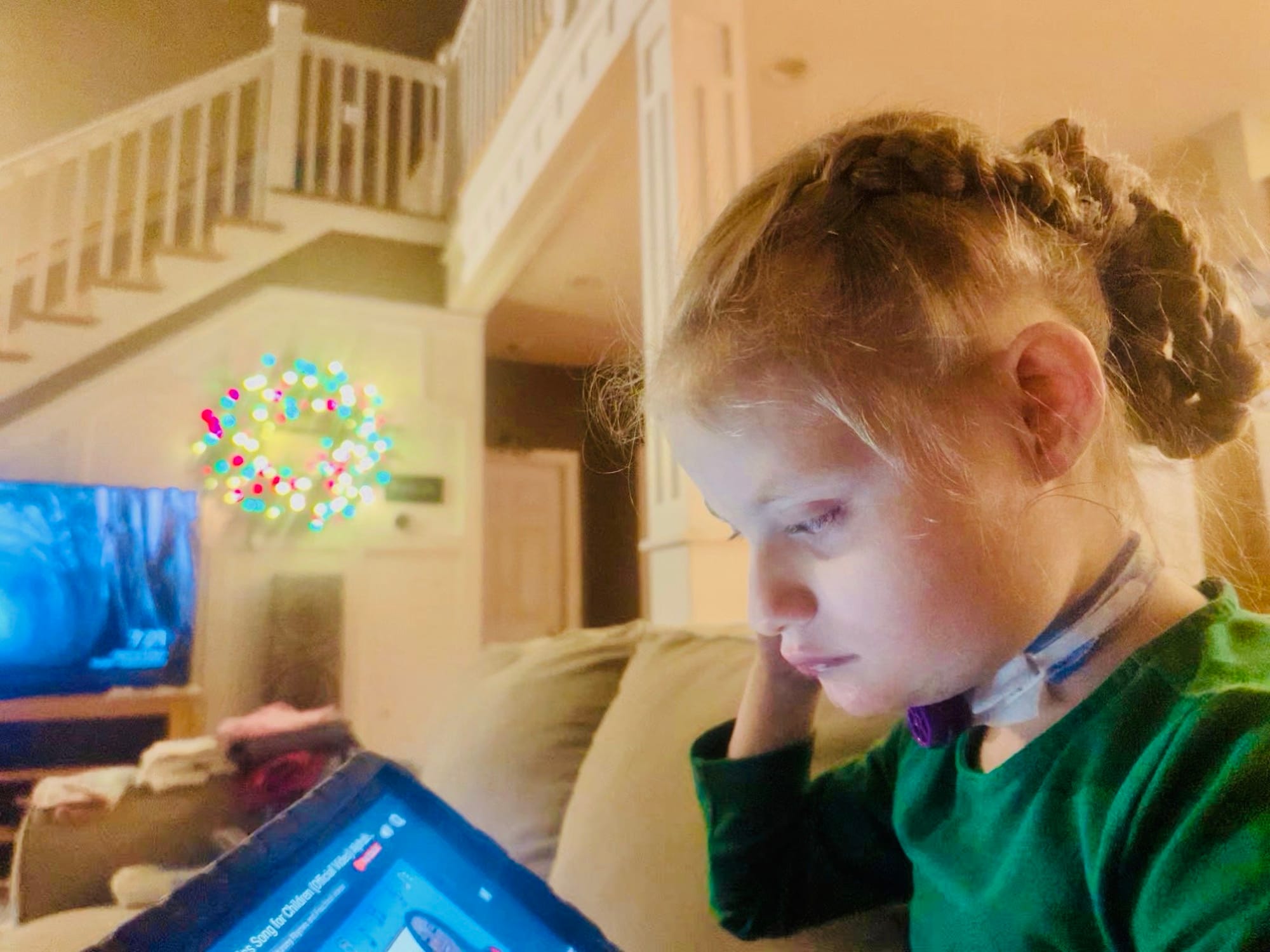Who Has Power? Disaster Preparedness for Our Families (by Stacy Staggs)

Emma Staggs at home during the holidays. {image description: A young girl with a pretty updo of braids sits on a couch working with her communication device. She has a tracheostomy. In the background are stairs and decorative columns, and a brightly lit holiday wreath.]
Families like ours are nothing if not prepared. As a mom and caregiver to my Little Lobbyists, Emma and Sara Bean, I have plans on top of plans. Emergency Action Plans (EAPs) are a lifesaving requirement for our homes and our schools. Our families have checklists, “go bags” and contingencies. When systems fail, we are the last line of defense between our loved ones and calamity.
I live in North Carolina, where recent, unannounced rolling blackouts by Duke Energy in addition to unplanned outages over the Christmas holiday resulted in panic and scrambling. In the early morning hours of December 24, 2022, systems failed. Redundancies failed. Tens of millions of us were without power for hours on end. As temperatures dropped indoors due to the polar vortex that covered a majority of the country, those of us with in-home medical equipment that directly saves or sustains the lives of our loved ones burned through their batteries or watched those batteries dwindle.
Because of our readiness plans, we can leave the house with all necessary equipment and supplies in a matter of minutes. We were already making calls to local family and friends, as well as area hotels to check availability (and whether they had power).
In North Carolina (and across the nation), thousands of residents rely on durable medical equipment (DME) such as ventilators, feeding pumps, suction machines, oxygen concentrators, apnea monitors, and more. As we’ve learned from the pandemic, keeping medically complex people at home saves lives, and it also reduces the strain on hospital systems.
Emma relies on a host of medical equipment including a pulse oximeter, a cool mist machine for her tracheostomy, nebulizer, oxygen concentrator and a feeding pump. We were lucky. We were fortunate. Our home’s power was only interrupted for 2 hours. As I began checking in with friends (we all have our online medical community, right?) I heard story after story about dire circumstances.
A friend whose son lives on a ventilator scraped together $1,300 out of pocket for a home generator, but was still alone in the dark and cold for 12 hours.
Another friend had to pull together $500 for a hotel (thankfully, one was available) to move herself and her child into, so his total parenteral nutrition (TPN) wouldn’t freeze.
Yet another friend had to dial 911 and get ambulance transport to a hospital (thankfully, one was available) because the battery on her oxygen concentrator was near empty after 12 hours.
When I hear the common refrain of victim blaming–“You should’ve had a plan!”--my reaction is not anger or indignity. I’m kinda glad for people who don’t know about this facet of life. They haven’t experienced the extraordinary efforts to get (DME) approved and maintained, a process that can take the better part of a year. They weren’t made to turn in “back up” ventilators in recent years, or find those supplies under recall.
Due to the pandemic and the effects of long Covid, thousands of Americans have acquired disabilities that require home DME, meaning that power outages are affecting more and more people. Many don’t know that Medicaid and state Medicaid waivers will not allow the purchase of even the simplest and smallest home generators for medical equipment. While most DME comes with back-up batteries, most of these back-ups are good for only a few hours. Additional backup batteries are difficult to acquire, and many DME manufacturers do not make them.
We are doing our best to keep our loved ones safe at home, doing our best to reduce strain on our increasingly over-taxed hospitals, and doing our best just to survive during these long pandemic winters. Unplanned, unannounced rolling blackouts in addition to power outages are simply inexcusable because most power companies don’t have plans for those on home medical equipment. In short, Duke Energy simply doesn’t know how many in-home ventilators it effectively turned off when it enacted contingency efforts.
For now, I’m working on holding our regional power utility to account for the layers of failures that occurred. Last Tuesday, Duke Energy was called to a public hearing with state regulators, and began its remarks with an apology to its customers.
Respectfully, we’re looking for changed behavior and more robust processes.
Stacy Staggs is the Director of Community Engagement at Little Lobbyists.
